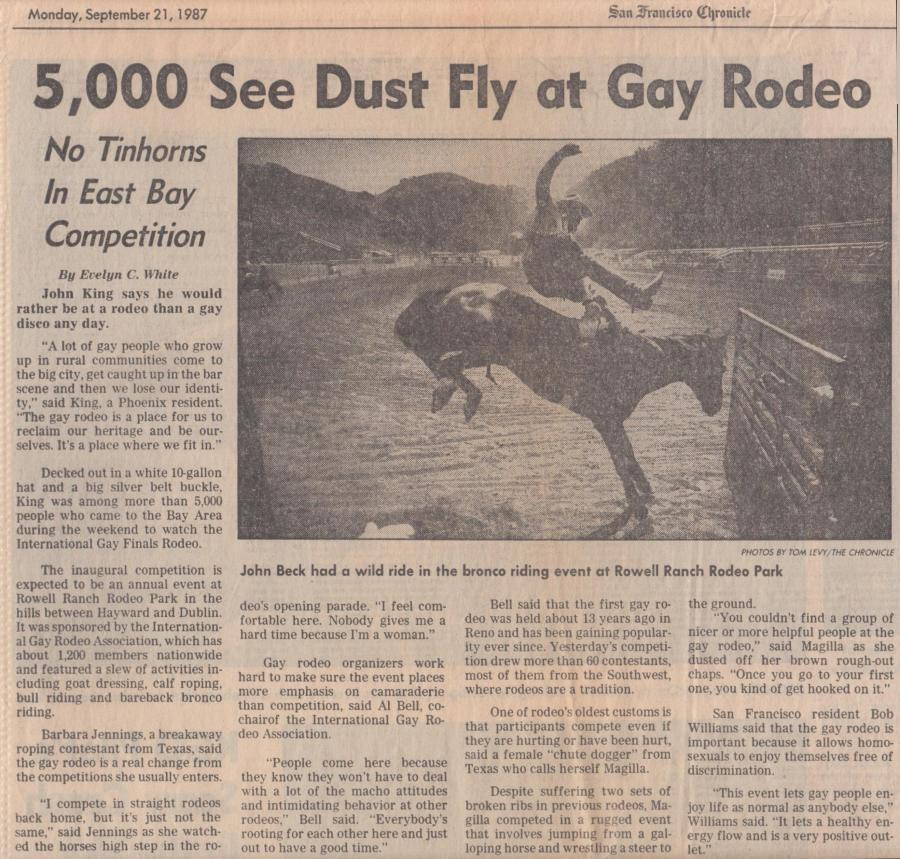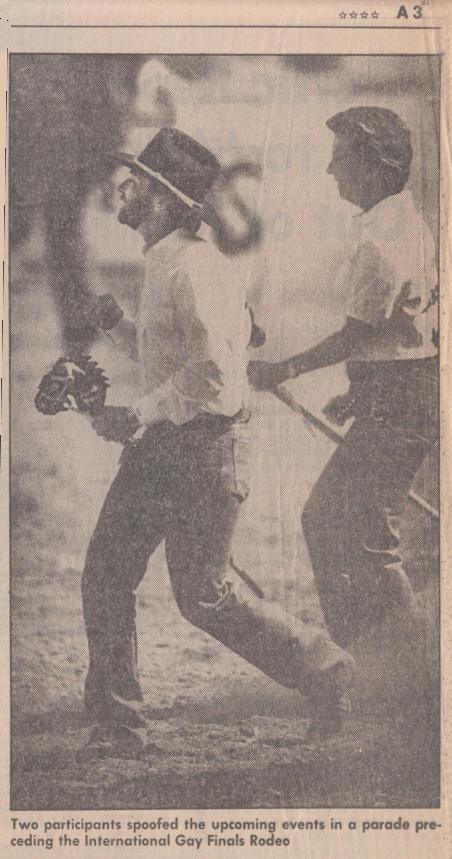

5,000 See Dust Fly at Gay Rodeo
No Tinhorns In East Bay Competition
By Erelyn C. White
John King says he would rather be at a rodeo than a gay disco any day. "A lot of gay people who grow up in rural communities come to the big city, get caught up in the bar scene and then we lose our identity," said King, a Phoenix resident. "The gay rodeo is a place for us to reclaim our heritage and be ourselves. It's a place where we fit in."
Decked out in a white 10-gallon hat and a big silver belt buckle. King was among more than 5,000 people who came to the Bay Area during the weekend to watch the International Gay Finals Rodeo.
The inaugural competition is expected to be an annual event at Rowell Ranch Rodeo Park in the hills between Hayward and Dublin. It was sponsored by the International Gay Rodeo Association, which has about 1,200 members nationwide and featured a slew of activities including goat dressing, calf roping, bull riding and bareback bronco riding.
Barbara Jennings, a breakaway roping contestant from Texas, said the gay rodeo is a real change from the competitions she usually enters.
"I compete in straight rodeos back home, but it's just not the same," said Jennings as she watched the horses high step in the rodeo's opening parade. "I feel comfortable here. Nobody gives me a hard time because I'm a woman."
Gay rodeo organizers work hard to make sure the event places more emphasis on camaraderie than competition, said Al Bell, co-chair of the International Gay Rodeo Association.
"People come here because they know they won't have to deal with a lot of the macho attitudes and intimidating behavior at other rodeos," Bell said. "Everybody's rooting for each other here and just out to have a good time."
Bell said that the first gay rodeo was held about 13 years ago in Reno and has been gaining popularity ever since. Yesterday's competition drew more than 60 contestants, most of them from the Southwest, where rodeos are a tradition.
One of rodeo's oldest customs is that participants compete even if they are hurting or have been hurt, said a female "chute dogger" from Texas who calls herself Magilla.
Despite suffering two sets of broken ribs in previous rodeos, Magilla competed in a rugged event that involves jumping from a galloping horse and wrestling a steer to the ground.
"You couldn't find a group of nicer or more helpful people at the gay rodeo," said Magilla as she dusted off her brown rough-out chaps. "Once you go to your first one, you kind of get hooked on it." San Francisco resident Bob Williams said that the gay rodeo is important because it allows homosexuals to enjoy themselves free of discrimination.
"This event lets gay people enjov life as normal as anybody else," Williams said. "It lets a healthy energy flow and is a very positive outlet."